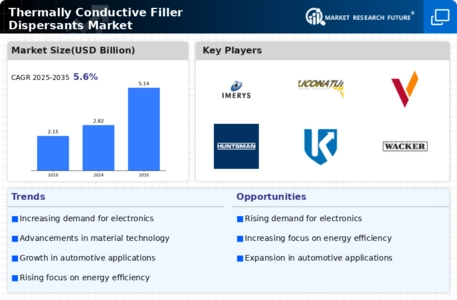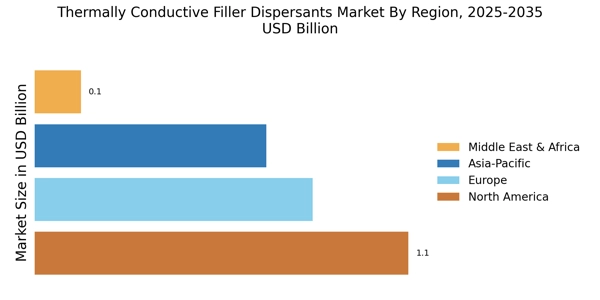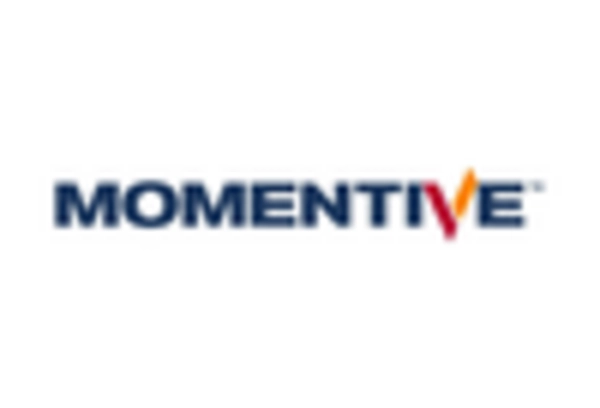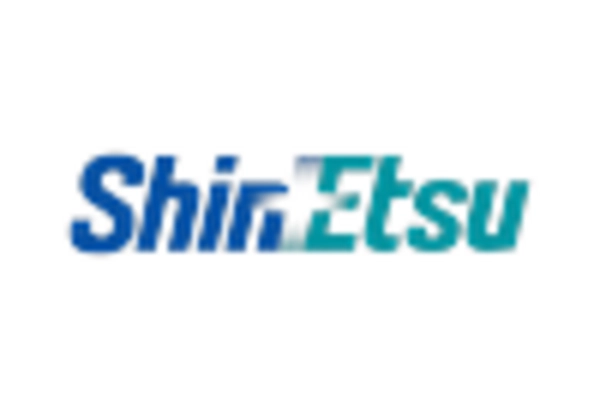The Thermally Conductive Filler Dispersants Market is currently characterized by a dynamic competitive landscape, driven by increasing demand for efficient thermal management solutions across various industries, including electronics, automotive, and aerospace. Key players such as BASF SE (Germany), 3M Company (US), and Dow Inc. (US) are strategically positioning themselves through innovation and partnerships. For instance, BASF SE (Germany) has been focusing on enhancing its product portfolio with advanced materials that offer superior thermal conductivity, while 3M Company (US) emphasizes its commitment to sustainability by developing eco-friendly dispersants. These strategies collectively contribute to a competitive environment that is increasingly focused on technological advancements and sustainability initiatives.
In terms of business tactics, companies are localizing manufacturing and optimizing supply chains to enhance operational efficiency and reduce lead times. The market structure appears moderately fragmented, with several players vying for market share. However, the collective influence of major companies like Henkel AG & Co. KGaA (Germany) and Momentive Performance Materials Inc. (US) is notable, as they leverage their extensive distribution networks and R&D capabilities to maintain a competitive edge.
In August 2025, Henkel AG & Co. KGaA (Germany) announced a strategic partnership with a leading electronics manufacturer to develop next-generation thermal interface materials. This collaboration is expected to enhance Henkel's position in the electronics sector, allowing it to offer tailored solutions that meet the specific thermal management needs of high-performance devices. Such partnerships not only bolster product offerings but also facilitate entry into new markets, thereby expanding Henkel's reach.
Similarly, in September 2025, Dow Inc. (US) launched a new line of thermally conductive filler dispersants designed specifically for the automotive industry. This product line aims to address the growing need for lightweight materials that can withstand high temperatures while maintaining performance. The introduction of these innovative products underscores Dow's commitment to meeting industry demands and reinforces its competitive positioning in a rapidly evolving market.
Moreover, in July 2025, Shin-Etsu Chemical Co., Ltd. (Japan) expanded its production capacity for thermally conductive materials in response to increasing global demand. This expansion is indicative of Shin-Etsu's proactive approach to scaling operations and ensuring supply chain reliability, which is crucial in a market where timely delivery and product availability are paramount.
As of October 2025, the competitive trends in the Thermally Conductive Filler Dispersants Market are increasingly influenced by digitalization, sustainability, and the integration of artificial intelligence in product development. Strategic alliances are becoming more prevalent, as companies recognize the value of collaboration in driving innovation and enhancing market presence. Looking ahead, it is likely that competitive differentiation will evolve from traditional price-based strategies to a focus on technological innovation, sustainable practices, and robust supply chain management, thereby reshaping the market landscape.


















Leave a Comment